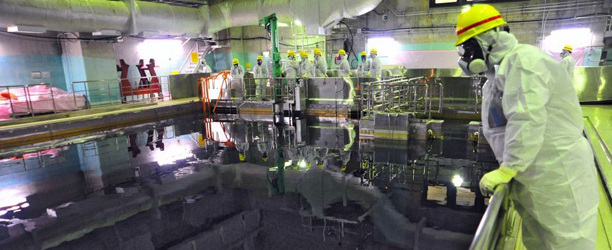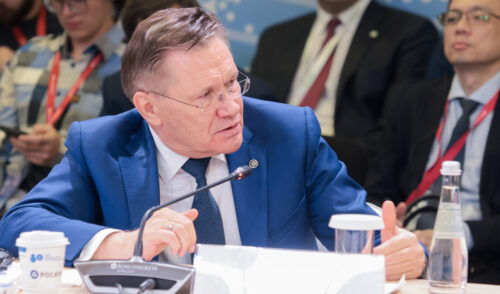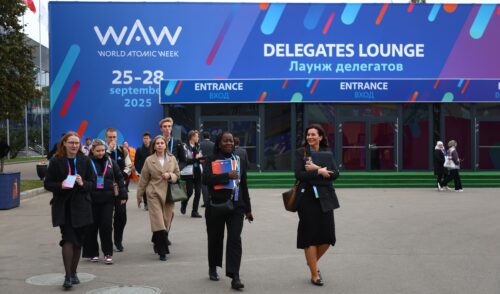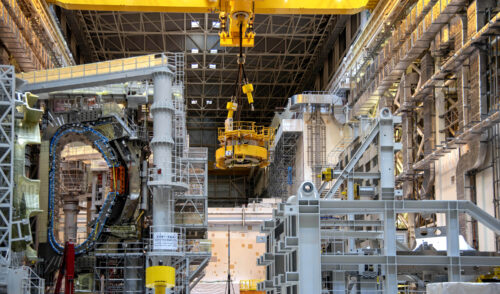Specialists of RosRAO (a specialist organization for radioactive waste management) would deal with clean-up of radioactive water at Fukushima-Daiichi NPP. The ROSATOM’s company is among three entities, which are to present their concepts of cleaning liquid radioactive waste (LRW) from tritium to the expert judgment in one year and a half. It is an infallible success to be among the best; it is a demonstration of the fact that Russia remains one of the global leaders in nuclear science and technology.
The open invitation of bids announced by the project office Mitsubishi Research Institute Inc. (management entity of the Project of Decommissioning and Contaminated Water Management of the Ministry of Economy, Trade and Industry of Japan) drew 29 pretenders. The three leaders, besides RosRAO, included the U.S.-Japanese GE Hitachi Nuclear Energy Canada Inc. and the U.S. company Kurion.
Now, within one year and a half the Russian scientists are to develop a demonstration project to prove that their technique of cleaning up LRW from tritium is the best. The Japanese authorities allocate JPY 1 billion (about US$ 9.6 million) to each bidder only for research into feasibility of applying their technologies at Fukushima-Daiichi NPP. After tests of prototypes, the company, which will build a full-scale system at the plant, will be announced. The Ministry of Economy, Trade and Industry of Japan allocates separate funds for these purposes.
Chances to win
The demanding challenge is set to two ROSATOM’s companies: RosRAO and Khlopin Radium Institute (carries out research in the field of nuclear physics, radiochemistry, geochemistry and ecology as relates to nuclear power). “We dealt with such problems together with specialists of the Radium Institute before,” Sergey Florya, the project manager and representative of RosRAO says. “When Japan called for the tender, we decided to participate without hesitation,” he adds.
He recollects how events came in the Land of the Rising Sun: “Tokyo stricken with trying heat. There was 30oC day and night and incredible humidity. Representatives of the companies that had been initially selected were proving advantages of their proposals. The time limit was very stiff. We were given 15 minutes for the presentation and 10 minutes for questions and answers. The commission included 25 experts, not only Japanese nuclear specialists but also the IAEA experts.”
ROSATOM has good chances to win the international tender. The bidders don’t have the right to disclose details of the competitors’ technologies but given the published documents, it is clear that Kurion offers the rectification and GE Hitachi Nuclear Energy Canada Inc. proposes the catalytic isotopic exchange. The Russian advantage is an optimum combination of both technologies. A reasonable combination of these two techniques will help do the task with the maximum efficiency. Besides, the Russian offer is more economical.
To confine tritium
Now, at Fukushima-Daiichi plant the water clean-up system is tested. The water is used for cooling three reactors. The clean-up system can deal with 62 types of radioactive substances but this list doesn’t include tritium. The tritium clean-up is part of the SNF reprocessing technology developed by scientists of the Khlopin Radium Institute. Therefore, the Russian specialists will face the last, crucial exam, which will confirm that ROSATOM is ahead of the whole planet in this area. In the recent years the Khlopin Radium Institute has carried out broad research related to separation of tritium and methods of its reliable and safe confinement, pursuing both the clean-up technology proper and methods of tritium content monitoring in water, air and foodstuffs. In St. Petersburg there is a team of highly skilled scientists and process engineers who are ready to join the Japanese project literally even tomorrow.
“We are dealing with a huge volume of LRW, i.e. 800,000 cubic meters. At Fukushima tritium concentrations exceed maximum permissible guidelines by 10,000 times,” Sergey Florya says. “There are highly skilled scientists and technologies in Japan, but we, Russian nuclear experts, can render assistance in radwaste management to the Japanese,” he says.
The accident at Fukushima-Daiichi nuclear power plant occurred after a magnitude 9.0 earthquake in the north-west of Japan on March 11, 2011. The quakes were followed by 14-meter high tsunami wave that rushed on the shore and flooded four of six nuclear reactors of the plant and disabled their cooling system. That resulted in a series of hydrogen explosions and reactor core meltdown. Roofs were damaged at the first and third reactors. Radiation leaked to the atmosphere and seawater.
The TEPCO, Fukushima-Daichi operator, stated that the strontium and tritium contents in the groundwater near the second reactor of the plant were exceeded. Besides, it was also stated that the radioactive tritium content in the seawater near the plant was exceeded as well.





